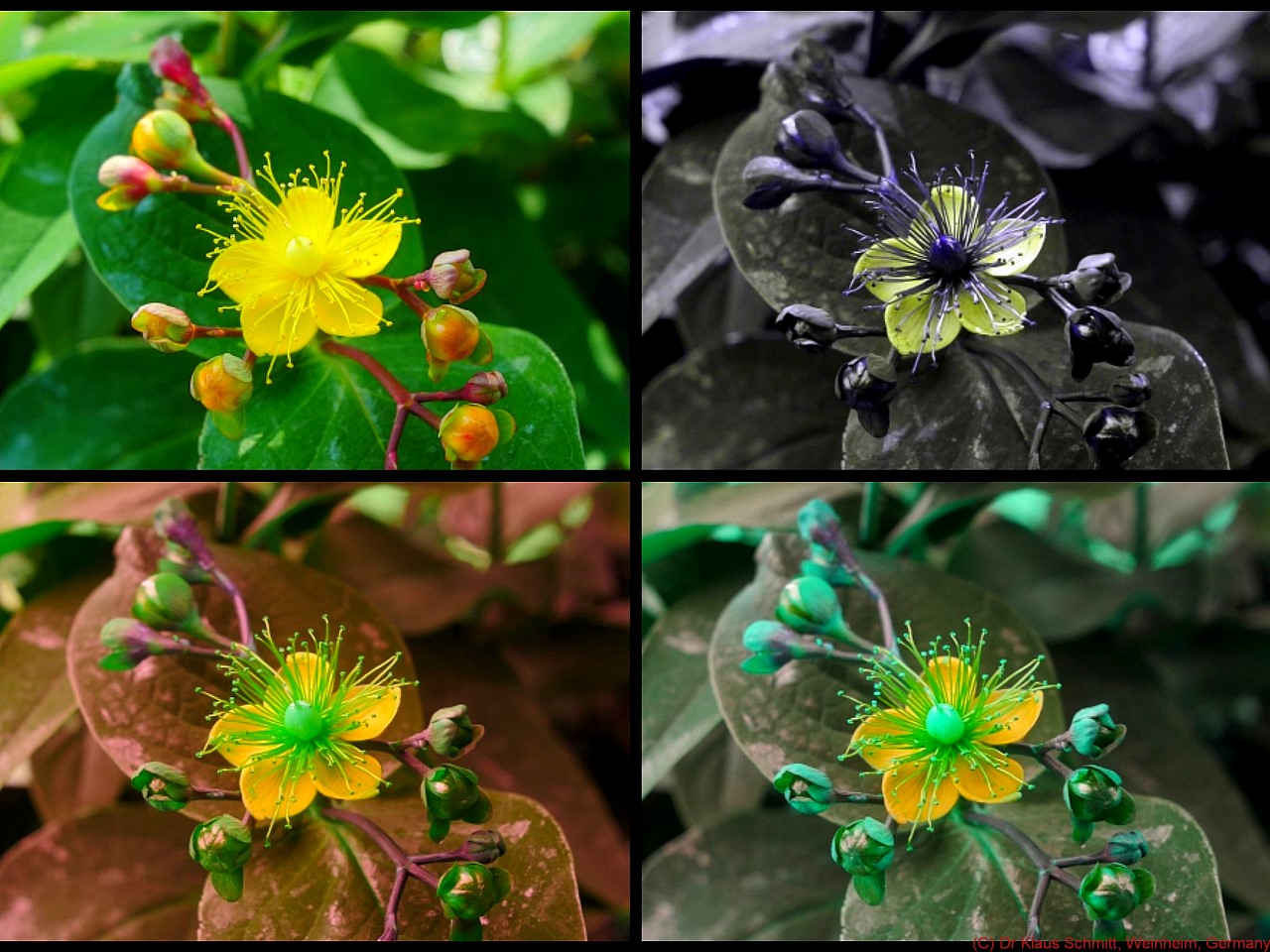Klaus,
Beautiful set!
Now how did the choice of display colors come about for the insect vision. Is this an accepted scientific standard, arbitrary or not?
Are there also color sets used which are themselves more esthetically pleasing to human perception.
Would be wrong to choose colors which happen to be naturally perceived as less clashing and more harmonious?
Asher
Thank you Asher!
The choice of color was (is) based on scientific publications and m person wa of translating those into colors which I suitable to "get the message across".
In short it is the translation or "mapping" of a four-dimensional UV-Blue-Green-Red (birds, butterflies) or three-dimensional UV-Blue-Green colorspace
into our human three-dimensional Blue-Green-Red colorspace. Since UV per definition has no color, a suitable but of course arbitrary "mapping" has to
be done, but ideally with the preservation of the different invisible UV-patterns, which is not easy at times, as teh others color channels do not show
those, so it has to be avoided that cancellation of those happens. And it has to be a logical color mapping, for instance if we are always told that bees
cannot see red, it makes not much sense to use red in the resulting image in my opinion (although it could be used for showing teh UV content, but makes
it rather difficult to view as it needs knowledge and experience to not get a "knot in your head" then...). hence why I map simulated bee vision images
using blue and green (and a hint of red only). And I always use teh term "simulated" with such, as it is not what they see, but what we humans possibly
would see if we had such eye sensitivities. Unfortunately it is a rather complex thing to explain, but I wanted an immediately perceivable difference,
without having to explain much, especially when it is about kids seeing them...

